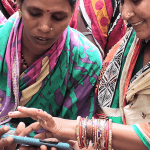Innovations in Financial Inclusion: Delivering Capital to MSMEs and Growing Businesses in India
An IFC study in 2012 estimated there were 29.8 million micro, small and medium enterprises (MSMEs) in India in 2010. That number grew to 51 million enterprises in 2015 and the sector employs an estimated 115 million individuals today. MSMEs account for roughly 38 percent of the country’s GDP, 45 percent of the manufacturing output and 40 percent of exports. According to the MSME census, more than 45 percent of MSMEs are located in rural areas, and low-income states account for more than 40 percent of the MSMEs in the country. In short, MSMEs are a critical driver of growth of the Indian economy and key for employment generation in both urban and rural areas. It’s clear that MSMEs and mid-corporate firms, those with sizable annual revenues that straddle the middle market between the smaller companies and the billion-dollar giants, are all a key to India’s economic success. Timely access to capital acts as both a lifeline and a growth engine for these companies during their evolution.
However, gross bank credit to MSMEs over the past four years has not kept pace with GDP growth. Additionally, GDP growth has largely been driven by the service sector. Where credit has been delivered, it has been targeted at consumers – impacting consumer spending – and at larger corporates for large-scale investments and infrastructure. This has all occurred while MSMEs remain the largest job creators. This allocation of capital has created an imbalance in our economic growth and has contributed to the jobless growth that the Indian economy is presently experiencing. With 1 million jobs to be created every month, capital needs to be allocated where it will help deliver on employment – the MSME and mid-corporate segment.
While the importance of a thriving MSME and mid-corporate segment is gaining acceptance, at a segment level, this group still faces challenges in accessing capital. While these companies are often high-growth entities with robust business models, they do not have collateral to provide to their lenders or have been in existence for a short period of time, making them unbankable. More recently, the sector is witnessing an emergence of specialist lenders who see this segment as an attractive business opportunity. This is happening at the same time as traditional lenders are vacating this space as they deal with their non-performing assets and, as a result, are stretched both from a capital allocation and human resources perspective.
In order to serve this segment, lenders require a different DNA and skill set from a people, technology and processes standpoint. For example, given the lack of collateral, lending to MSMEs requires capabilities to analyse and project future cash flows of the business. While this might sound simple, it is challenging to validate the information and reconstruct data on these companies when there is incomplete and asymmetric information. Under these circumstances, delivering capital with fast turnarounds requires a deep understanding of the needs of this market, and offerings that deliver an answer. It is also imperative that lenders have processes-driven systems and technological capabilities to deliver the funds at sustainable and scalable levels.
Most importantly, meeting the evolving needs of MSMEs and mid-corporates requires continuous innovation and an intimate understanding of the customers’ capital needs. Some of the innovations may be incremental while others will be game-changing; the ability to experiment and pilot different initiatives and pivot quickly becomes critical.
Below are a few innovations and initiatives that are helping deliver capital to MSMEs and mid-corporates.
Incremental Innovations (Partnerships)
We are seeing an increasing number of partnerships between players who have complementary skills and capabilities; for example, a relationship between an equity provider, a secured lender and an unsecured lender could be symbiotic from the supply side and at the same time provide a comprehensive solution to the borrower. These could be entities within the same organisation or entirely unconnected entities.
Partnerships are also working well in the credit scoring and credit assessment areas, where the use of technology can accelerate turnaround times while, at the same time, improve the credit assessment process. We are not there yet on the credit assessment process, but the combination of traditional and new technologies holds significant promise for faster turnaround and the provision of scalable solutions. The key is to structure relationships that result in a win-win outcome for all parties.
Game-changing Innovations
Game-changing initiatives are occurring at the demand-supply intermediation level. There are significant pools of capital waiting on the sidelines. Both domestic and international investors are looking for high-yielding, regular interest-bearing instruments but do not have access to the MSME and mid-corporate segments at affordable costs. It’s possible to create pools of SMEs so the cost of sourcing transactions and due diligence can be spread across a larger portfolio, bringing down transaction costs. The sector is already witnessing a large number of debt funds – similar to debt pools – emerging in the market to tap into the different liability requirements of MSMEs and mid-corporates.
In addition, some investors look at this sector as a way to create impact, where these MSMEs and mid-corporates are addressing social and environmental challenges. Some of these companies can provide commercial return but still don’t necessarily meet the traditional evaluation metrics – being scalable, with a large, addressable market and an exit after four or five years. In these circumstances, interested parties can come in to provide “catalytic capital.” This can be provided in the form of grant capital, guarantees and subordinated debt and acts as a tool to encourage the more traditional investors to take exposures in these sectors. Return on impact bonds is also determined by the positive outcomes created. Payments can be reduced if certain milestones are achieved, and they are gaining acceptance.
It is encouraging that there is an increasing appetite to lend to MSMEs and mid-corporates by specialist lenders, who are combining new technologies with traditional lending techniques. Continuous innovation and delivery of differentiated offerings will go a long way toward addressing the needs of this vital segment of the economy.
Akbar Khan is CEO of IntelleGrow.
Photo courtesy of Sundaramoorthy Thimmarayan and ILO in Asia and the Pacific, via Flickr.
- Categories
- Investing, Social Enterprise



